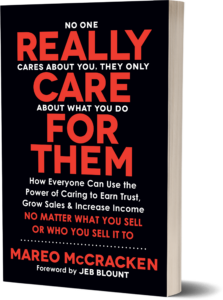Mark Hunter's Blog, page 22
December 8, 2021
9 Key Elements of a Strong Annual Plan
Being productive means you’re generating revenue or focused on goals. Being busy is everything else.
Which would you rather be next year?
I want to help you create an effective and helpful Annual Plan this year. In addition to these 9 key elements, I’m offering more instruction and direction in this month’s Annual Planning Masterclass You’ll finish with a crystal clear picture of how to make the best plan to have your most productive year. Find out more here.
1. List your current year goals.
How have you done with those goals you wrote (what probably seems like forever ago)? What did you learn from them?
And if you’re reading this before the end of the year, what’s your expected year-end finish? I want you to walk through it, because this is a reality check: “Do I blue sky my goals? Or am I realistic?”

via GIPHY2. Review your selling proposition.
With regards to how you did with your goals, are there elements in your selling proposition that you need to change?
Are there areas that you need to say, “Hey, you know what, this doesn’t fit my ICP (ideal customer profile), I got too sidetracked over here.”
If you strayed a little too far from your lane, it’s time to straighten things up.
Read more about how to identify ideal customers.
3. Time management
The most successful people are disciplined people, and discipline means excellent time management.
In fact, there’s a direct correlation between the results people achieve and the effectiveness they have with their time.
Think about it, what worked and what didn’t? Where do you need to be spending more time? What do you need to eliminate?
Find those gaps and you’ll be much more productive next year.
4. Your mindset
How motivated were you last year? Where did your motivation lag? Was it in the second quarter, third quarter? Was it coming into summer months?
Your mindset impacts your performance, provides you with adrenaline and the oil in your productivity machine. A solid mindset allows you to be so much more efficient because your head’s in the game, you’re not foggy.

via Peloton on GIPHY5. Customer list
Who are your strong customers?
Which ones are at risk of leaving?
If I’m going to build out my goals, I need to figure out where I’m going to be spending my time. Knowing who my customers are reveals upcoming opportunities, and who needs more of my time.
6. Prospects.Did you have enough prospects this year?
If you need more prospects, then it’s crucial to allocate more time to prospecting as part of your annual plan.
Is your prospecting focus big enough to support the end results that you need to achieve? If not, make an adjustment.
7. Competitors
Who are your competitors in the marketplace?
What did they do this past year that helped you or hurt you? How is that going to impact you next year?

via Rooster Teeth on GIPHY8. Company status
Did your company undergo something last year that helped it or hurt it?
Or maybe sales really increased last year from a new product, but as a result, it’s going to be tougher to get new sales this year.
Is your own company planning a major expansion? Or a big launch? How might you capitalize on that?
Are there people leaving your company that are critical subject matter experts for you?
9. Industry Status
How the industry fairs can impact how things go for you, too. Are you going to be taking market share from other people or the other way around?
Maybe there’s another industry you’ve got to get into, because this industry’s mature and declining.
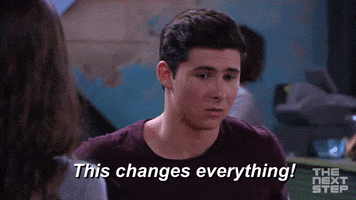
via THE NEXT STEP on GIPHY
Take the time to determine where you came from.
By answering these questions and working out all the answers, you’re creating a foundation. An annual plan built on this kind of foundation will be much stronger.
 Next year could be good, or it could be great.
Next year could be good, or it could be great.
To have your strongest chance at success, I recommend checking out this month’s masterclass. This course is totally customizable, and will foster some great thought process about what you’ve accomplished, and everything you hope for next year.
This course starts with prep for a great annual plan, then each video dives into the details of each piece of an effective plan. After we’ve covered all the details, it’s time to come up for air and focus on where do we go from here? Once you have a plan, I will help set you up for successfully achieving those goals as we explore next steps.
To make you an even more powerful salesperson, I’m including BONUS access to my Goal Setting Masterclass for free when you enroll in the Annual Planning Masterclass. That’s two masterclasses for just $59! It’s an incredible value to start your 2022 off ready and running.
Copyright 2021, Mark Hunter “The Sales Hunter” Sales Motivation Blog. Mark Hunter is the author of A Mind for Sales and High-Profit Prospecting: Powerful Strategies to Find the Best Leads and Drive Breakthrough Sales Results.
FollowFollowFollowFollowFollowFollow
The post 9 Key Elements of a Strong Annual Plan first appeared on The Sales Hunter.
December 1, 2021
Why You Need an Annual Plan
Preparing for the year ahead brings many benefits, including those that come via the process of just sitting down and creating one.
Assessing yourself and your business can bring about an awareness that allows you to avoid pitfalls in the upcoming year–because you’ve thought it through, and done your research.
Of course, everyone could use an annual plan. But what you need is a really great one.
Look out for my Masterclass available later this month at The Sales Hunter University where I’ll teach you each element of a powerful annual plan.
1. Greater confidenceYour annual plan helps you enter the coming year proactively instead of reactively. You cannot just sit back and hope your customers bring you something good next year. That’s not good enough.
An annual plan is going to give you that confidence, because a good one helps you know what needs to be done, and how you’re going to accomplish it.

via GIPHY2. Understand the results
I’m talking about the results you achieved in the year just ending. Take time to look at your results. What happened in the past year might be history, but that doesn’t mean forget it all and move on.
In fact, just because I write a plan down on a piece of paper, it doesn’t mean it’s going to come to fruition. You must think about: What were you able to accomplish last year? What makes you think you’re capable of doing something greater, or different?
When you understand and can analyze where you’re coming from, that helps you set achievable goals. Now if you follow my videos or writing, you know I advocate for big goals. When you aim higher, you can attain more. I also advocate for simplifying your goals–you don’t need 15.
3. Assess the current state of affairsTake a moment to analyze the results and draw some basic conclusions, first.
It’s a crazy environment out there between the economy, COVID, and everything else. The current state of affairs means I need to know what’s happening in the industry, too.
Knowledge is power! Educate yourself a little so you can tailor your plan as needed.

via Paramount Network on GIPHY4. Identify weaknesses
What gaps need to be addressed? What are some of the weaknesses that I need to manage?
Of course, I don’t want to dwell on weaknesses, but I need to be able to call them out and deal with them.
5. Identify opportunities
What is going to help me succeed? There might be a new product or a new service coming out. Or you’re going to have a new geographical territory next year, or a major competitor is exiting the business, whatever it might be.
These are opportunities that will give you momentum for the upcoming year.
6. Allocate resources.
It’s not just you and your time. Allocate resources in terms of: Who are the subject matter experts you need to bring in? Where are the knowledge gaps where you need to learn? What are things that you know you can exploit?
Help yourself maximize. Because there may be a new opportunity identified, but in order for me to maximize that opportunity, it’s possible I need to line up with a subject matter expert, or increase my knowledge.
On the other hand, there may be a weakness that you identified, and now you’ve got to figure out–how do I overcome this weakness? Let’s say I need to find new prospects. So, I’m going to have to allocate more resources to be prospecting.

via DARK SIDE OF THE RING on GIPHY
Why do you need an annual plan? Ultimately, it starts with achieving greater confidence.
I want to give you that, as well as the certainty of a well-made annual plan. Check back next week for more on this topic, and head on over to The Sales Hunter University for great continued learning opportunities.
If you’re looking to gain knowledge in the upcoming year, and invest in educating yourself, I commend you. And I invite you to see what TSHU has to offer.
If proficiency in sales skills is one of your professional goals, Level 3 – All Access is a great choice. That gives you unlimited access to all past Masterclasses, and each month’s new course in 2021.
I can also help you on a more personal level, as this membership gives you drop-in office hours, and monthly coaching, too.
Let’s get off to a great start.
Copyright 2021, Mark Hunter “The Sales Hunter” Sales Motivation Blog. Mark Hunter is the author of A Mind for Sales and High-Profit Prospecting: Powerful Strategies to Find the Best Leads and Drive Breakthrough Sales Results.
FollowFollowFollowFollowFollowFollow
The post Why You Need an Annual Plan first appeared on The Sales Hunter.
November 23, 2021
When is the Best Time to Ask for a Referral?
In fact, most people are more than willing to help you. All you have to do is ask.
Asking for a referral is not limited to any specific time frame. However, these are six opportunities that act as great reminders for us to request a contact or an introduction.
Learn more about How to Get More Referrals in this month’s masterclass. Early enrollment ends today!
1. Immediately after you deliver some value
A referral anytime after you deliver value? Really?? Yes.
Too many times, people say, “Well, I can’t ask for a referral because it’s too soon. I just closed the deal, or I just talked with them. I need to wait.”
No, immediately after you deliver value of any kind, you can ask them for a referral. You’ve delivered, they’re appreciative of it, and you can simply say, “Hey, who are some other people that may appreciate the same outcome you’ve received?”
2. Use every communication method possible.Some people feel they can only ask for a referral in-person, such as in a meeting. In-person is not your only option! You can use email, a call, voicemail, text messaging, whichever medium you want.
Different people respond to different things.

via Ryn Dean on GIPHY
3. End of the year
This is the perfect time to call and say, “Thank you.”
“Hey, I want to say thank you for being my business partner (customer, client, etc). ”
And you say, “I’ve had a great year and it’s really because of relationships with people like you. I trust you’ve had a good year.” You might be surprised, but they will begin sharing their feelings and thoughts with you.
They’ll probably also talk about what they planned for next year. It’s a great way to identify opportunities that you can help them with in the following year!
But here’s where it gets really good. You’re having a great conversation, and you can say, “Hey, it’s wonderful working with people like you. Who are some others you know that would benefit from how I’ve been able to help you?” I say that in a very personal tone. Guess what? People will share names with you.
4. Key datesThese might be anniversaries of when they began working with you, or birthdays or special events. Don’t hesitate to reach out on key dates.
It may be an anniversary of when they first began working with you. Call them up and say:
“Hi ‘so-and-so’, thank you. Do you realize that it was three years ago today that we signed the first contract, and ever since then, we’ve been fulfilling your purchases? It’s been great working with you. We truly have enjoyed it.” And then you can simply roll right into asking them for referrals.

via Hyper RPG on GIPHY5. Association networking events
This is a great opportunity to use your physical presence at an association or industry networking event of any type to literally get that connection right there.
You might say things like:
“Hey, wow, I don’t see ‘so-and-so’ here. I know you know them, and I’d really like to get to know them. Would you mind making me an introduction?”
“Who here is someone that you think I should know? Would you mind introducing us?”
Read more about how to create a referral network.

via Amazon Prime Video on GIPHY6. One-on-one
There’s something magical when you’re connecting with people one-on-one. You’re having a phone call, or a meeting with them, and it becomes a little more intimate, a little more special.
“Question for you, who do you know that you feel I should be talking to?”
Or maybe you say, “I know that you know ‘so-and-so.’ Would you mind making me an introduction?”
In fact, I had somebody who sent me an email today, and they shared some information, and complimented me!
Then they said, “Oh, by the way, would you mind making me an introduction to another person?” Of course I was happy to! And then I said, “Who else would you like me to introduce you to?” Because you know what’s interesting? Once you get one referral name, it’s incredible how many times you can come up with more referrals.
Read more about how to ask for a referral.
 When is the best time to ask for a referral? Right now! I challenge you to go out and do it.
When is the best time to ask for a referral? Right now! I challenge you to go out and do it. If you think you need more training in this area, or to gain confidence in your ability to ask for referrals, check out this month’s Masterclass: How to Get More Referrals.
This course walks through who to ask, what to say, and how to ask in different situations. I’ll also teach you how to give your own referrals, and about referral networks–I know I’m so thankful for mine!
For just $59, you can hone your referral skills using my proven strategies. By the end, you’ll be a Master of referrals yourself.
There’s plenty more training and learning at The Sales Hunter University. Check out other Masterclasses about Email Prospecting, Phone Prospecting, or Follow-up. Or become a member by choosing one of the three levels of membership. Level 3 holds the greatest value, giving you unlimited access to all masterclasses–past, present, and future. Learn more today!
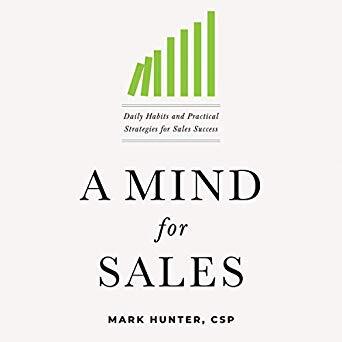
A Mind for Sales was just named in the 24 Best Sales Books to Read in 2021 by Teambuilding.com!
“Mark Hunter teaches sales professionals how to build a winning mindset and practice habits that lead to long-term success.“
Isn’t it time you put it on your Christmas list? Better yet, you could just treat yourself now.
Copyright 2021, Mark Hunter “The Sales Hunter” Sales Motivation Blog. Mark Hunter is the author of A Mind for Sales and High-Profit Prospecting: Powerful Strategies to Find the Best Leads and Drive Breakthrough Sales Results.
FollowFollowFollowFollowFollowFollow
The post When is the Best Time to Ask for a Referral? first appeared on The Sales Hunter.
November 17, 2021
How to Create a Referral Network
When done right, a referral network is a self-feeding machine in which you’re getting referrals regularly.
Because your network knows you, and knows your business, the referrals they give you are much more likely to convert than your average lead. That means time spent nurturing and building your referral network equals time saved, because you’re not having to sift through poor prospects.
Let’s dive into seven ways to create and grow your referral network.
1. Identify integrity-focused people.
These have to be people like you. These are people who have goals like yours, work ethics like yours. Maybe they are not necessarily in your business, but they know people who are in your business, just as you have contacts in theirs. Look for the helpers, they are the people you want to connect with.
2. Create a referral profile.
Write down: What does a good referral look like to you?
You have to be able to explain that to these people who are going to be in your referral network, so they know who to look for. “I’m open for referrals,” doesn’t cut it. What do you mean by that?
The profile includes: What type of business, what type industry, geography, jobs, whatever it might be. What’s most important is understanding who your ideal referral is, and it’s amazing how much more successful you’ll be.

via The Roku Channel on GIPHY3. Give more referrals.
I want you to give more referrals to people who are not only in your referral network, but also to people outside of it.
Once you get into this referral nature, it’s incredible how the floodgates begin to open. Decide to be very intentional about giving referrals to people who are inside and outside your referral network.
I share some great strategies for getting and giving more referrals in this month’s Masterclass. Click here to find out more!
4. Keep your network informed.I have several people with whom I share a referral network, and we connect minimally every other week. We ask each other questions like: “Who can I help you with? What are you looking for?” We exchange ideas too, but it allows us to stay informed.
Honestly, it puts fuel in all of our tanks. While we’re all comparing notes, we’re lifting each other up, too.

via GIPHY5. Set network objectives.
These are really like guidelines.
Let’s say everybody in the network is going to get at least five good referrals from every other person in the group each month. Whether you choose five, or another number, matters not. What’s most important is to follow through on it and hold people accountable. Because without objectives, you may pull this group of people together and they’ll want to join, but never do anything.
6. Create a helping culture.
Many referral networks become an intellectual network. Every referral network I’ve been part of winds up becoming an idea exchange where we’re really helping people.
“I need some help with this client over here.”
“Would you mind giving me some ideas about…”
It’s impactful how much more everybody jumps in and does.

via Disney+ on GIPHY7. Go the extra mile.
Never think for a moment that you can’t do a little bit more. You want to be the one who not only gives the most referrals, but makes the introductions, helps them along.
I know several people who go that extra mile, and it’s amazing how much business they do because they help other people–and not only in their referral network. As a result, their name and reputation spread and people want to reach out and help them.
 Asking for a referral is not hard, and once you do it a few times the process will become second nature to you.
Asking for a referral is not hard, and once you do it a few times the process will become second nature to you.Once you understand the ground rules, and see the amazing benefits, referrals will be a non-negotiable part of your routine.
Referrals are such a vital part of my business, I knew I needed to create a Masterclass to share my knowledge and strategies with you.
For just $59 I’ll walk you through my tested techniques for giving and getting referrals. I’ve included several example messages and emails. I’ll help you identify who you could ask for a referral, as well as the referral jackpot found on social media.
In fact, enroll now and I’ll send you an invitation to my webinar on Nov. 30th at 2 p.m. about Best Practices Used by the Masters of Referrals, exclusively for those that buy this masterclass early.
If you want to get serious about taking your sales to the next level, become a Level 3 member because that gets you access to everything. All the masterclasses, open office hours where you get one on one time with me, coaching calls, AND the weekly sales kickoff. In fact, there’s even more on the list of perks than just that! Click here for more information about accessing The Sales Hunter University.
Copyright 2021, Mark Hunter “The Sales Hunter” Sales Motivation Blog. Mark Hunter is the author of A Mind for Sales and High-Profit Prospecting: Powerful Strategies to Find the Best Leads and Drive Breakthrough Sales Results.
FollowFollowFollowFollowFollowFollow
The post How to Create a Referral Network first appeared on The Sales Hunter.
November 10, 2021
How to Ask for a Referral
You’ll never get the referrals you don’t ask for. There are plenty of ways to ask, but the most important thing is to ask.
Looking to build your confidence for getting referrals? I’ll walk you through each step in my new Masterclass: How to Get More Referrals. From who to ask, how/when to ask, and what to say, I’ve included it all–in detail– so you can finish the course confident that you can ask and you can get referrals. Find out more here.
1. Tie it to what the customer bought.
The customer may have bought something from you. They like it, and it’s working well. You might say, “Hey, who are some other people you know, who would benefit from that same item?”
It’s a simple ask when I tie it very specifically to that item. They know exactly what I’m talking about, and will know others in their industry that could also benefit.
2. Leverage other names.
There might be people you want to get to know, and you have a contact that knows them. It’s very easy, you could say, “Hey Melinda, I know that you know Meredith, and I don’t know Meredith. Would you mind making an introduction for me to Meredith? Because I really believe there are some things I could help her with.”

via A Little Late With Lilly Singh on GIPHY
You’re making it very easy for that person to make a referral for you. Remember, one of the ways I recommend getting more referrals is giving more referrals, too.
Read more about tips to get more referrals.
3. Be complimentary.
It’s pretty hard to say “No,” to someone who is complimentary.
People will send me an email, and they’ll be complimentary of something I’ve done or something I’ve helped them with. So when they say, “Hey, would you mind introducing me to so-and-so?” it’s a lot harder to say “No.”

via Nick Jonas on GIPHY
It makes me feel good! So what do I do? I connect with them, and I set them up with their chosen contact.
4. Link to a business or a peer.
“Hey, I know you have some other company divisions…. Would you mind introducing me to them?”
“You have some other companies that you’re aligned with….Would you mind connecting me with them?”
That’s so easy, because it’s within the family.
5. Tie it to the customer’s needs.
This is different from what they bought, rather it’s about the customer’s needs.
“I was really glad I was able to help you achieve this. (i.e. I was glad I was able to help you minimize the number of employees.) Who are some other companies that you work with that have that same need?”
That’s a very easy way to ask, because you’re talking about their need and boom, the conversation rolls right into referrals.
Your customer will be so satisfied with how you’ve helped them that they’ll be happy to make an introduction.
Some people have a lot of apprehension reaching out to customers because they doubt they are happy.
If you believe the customer isn’t satisfied, then it’s even more important for you to reach out to them, and there’s no better way than a referral.
You want your customer to tell you there’s a problem. Remember, your customer is going to tell somebody–wouldn’t you rather it be you, the salesperson, than their friends, business associates, etc?
 Referrals, when done well, can be a catalyst for sales growth.
Referrals, when done well, can be a catalyst for sales growth.There are so many contacts in your toolbox just waiting to be used to get you some great leads. I believe you can get more referrals–if you have the know-how.
I have so much to teach you in this month’s Masterclass, How to Get More Referrals. We look at how to get referrals on social media, as well as how to ask, including scripts for email or the phone. I’ve also included information about referral calendars, referral networks, and my own personal rules of referrals. Check out the full course contents here.
Referrals are a great way to increase your ability to close more sales. That’s why I think the $59 course fee is well worth it. Plus, enroll now and get invited to the exclusive early-bird webinar all about best practices used by the Masters of referrals on Nov. 30th at 2PM central.
I want to help you to help yourself by utilizing the wealth of leads available to you via your own contacts. Click here to enroll.
Copyright 2021, Mark Hunter “The Sales Hunter” Sales Motivation Blog. Mark Hunter is the author of A Mind for Sales and High-Profit Prospecting: Powerful Strategies to Find the Best Leads and Drive Breakthrough Sales Results.
FollowFollowFollowFollowFollowFollow
The post How to Ask for a Referral first appeared on The Sales Hunter.
November 3, 2021
10 Tips to Get More Referrals
You simply cannot say, “But what if we haven’t been in business long enough to get referrals!” Excuse me, you’ve been on planet earth, haven’t you? That means you’ve got friends. You’ve got acquaintances. Referrals don’t just come from people who are actively doing business with you.
There are some great ways to integrate asking for referrals into your sales process. I’ve got ten to share with you today.
1. Build a referral network.Collaborate with other people who are like you, who you feel have integrity and credibility. Start off simply connecting with one another every week to exchange some names, and make some introductions to each other. You create a referral network with the objective to help give each other referrals.

via NickRewind on GIPHY2. Give more referrals.
If you expect more referrals, you better be giving more referrals. In fact, never expect to get a referral until you first give a referral. It’s amazing how it not only changes your attitude and your outlook, but also how doors open up.
Read more about giving referrals.
3. Make it a habit.
I suggest you make it a habit to ask after each sale. If you forget, that’s because it’s not a habit. Asking for referrals must be part of your sales process.
4. Leverage key dates.I want you to build it into your plan, because without a doubt if you ask more, you’ll get more.
Every person you work with has key dates. They may not even be a customer of yours, but they own a business and they just celebrated 10 years of being in business. I want you to call them up. I want you to congratulate them. And as you congratulate them, you might say, “Hey, who are some other companies that you think we might want to do business with?”
I do this all the time. Referrals are a key piece of my business. After all, these same people are ones that I’m also giving referrals. That’s why I’m able to get so many.
As another example, they may be a customer of yours and you call them up on their service anniversary. Or, it may be a key date within their company. It could be any number of things, but no matter what, it’s a great opportunity to reach out.

via GIPHY5. Identify people.
Identify people you want to connect with. Create a list of 10 people or 10 companies–now who knows those people? That’s where you should start. After you identify who knows those people, you’ll see who is on that secondary list that you know. As a result, you’re going to very deliberately call that person up and say, “Hey, would you mind making an introduction for me to ‘so and so’?”
I do this strategy all the time. There are companies that I want to get into, and I begin to ask myself, “Who is working with these companies? Now, who knows key people there?”
I always do it under an exchange premise. In other words, “Hey, you help me get in here, now where do you need help getting into? Because I’ll help you get in that door.” And thus a mutually beneficial relationship has been established.
LinkedIn is a great place for having these conversations and making these connections. Want more information? Check out this NEW bonus Masterclass all about Mastering LinkedIn for Business Development.
6. Make it easy.
Don’t make it complicated. “Hey, would you mind just popping them an email, and copying me on it?” That’s the easiest form for sure. Of course, you’d love to say, “Hey, would you arrange a lunch and the three of us will get together and meet.” Most of the time, that just isn’t going to happen.
A quick introductory email is a much easier ask. There’s a very standard email that I send out when I’m connecting people:
“Hey, Bob I want you to meet Linda, I think the two of you have a lot in common. The two of you could really help each other in this area. I’ll let you two run with it from here.”
It’s amazing how it just comes together. And if it doesn’t, that’s fine, you’ve done your part.
7. Have a process.
I have a standard way that I connect back with people. In other words, I reached out to you. You gave me a referral name. I’m going to call the contact up and say, “Hey, Jose said I needed to reach out to you…. Or Melinda said I should reach out to you.” I always invoke the person’s name.
However, make sure you ask for permission to use their name when you call the referral.
How many times should you reach out? I typically reach out three, maybe four times. I’m not going to put them in a pipeline of contacting them 20 times, because that’s doing a disservice to the person who gave you the referral. Instead, my process includes reaching out to them three or four times.
8. Keep people informed.
I always want to keep the person who gave me the referral informed.
“Hey, you know what? I’ve tried to reach out to Tommy and I’ve tried to connect with him three or four times and he is not responding.” I’d then hope to hear, “Oh, really? Well, you know what? I’ll give Tommy a call. I’ll bug him to make sure he connects with you.” Or maybe they’ll say, “Oh man, I’m sorry to hear. Let me give you the name of somebody else.
If you do connect, let them know. “Hey, I had a great conversation with Tommy. Thank you for connecting me. I have a feeling this might work out to be a very good relationship.”
You keep them informed all along the way, because you want to create referral partners. People who are very comfortable with giving you referrals. What I’ve found is people who give you one referral, if it works, they’ll give you more.

via GIPHY9. Be present and engaging.
Nobody wants to connect their contacts with just anybody. They want to link engaging people who have a personality. Integrity and authenticity are absolutely key. You have to make sure the person who is referring you sees that. And when you’re present and engaging with them, they’ll see those traits in you.
10. Set a goal.
Set a weekly goal for the number of referrals you’re going to give, and the number of referrals you’re going to ask for. Notice I say, “ask for”–not get—because that’s different. Not every time I ask, am I going to get a referral.
Establishing goals is the way that you bake it into your process.

via FX Networks on GIPHYAsking for a referral is not hard, and once you do it a few times the process will become second nature to you.
Enhancing your presence on LinkedIn is a great place to start for making connections, giving and getting recommendations, and nurturing relationships.
I’ve teamed up with EXPERTS, Brynne Tillman, Bill McCormick to share content we’ve been wanting to impart for a long time: Mastering LinkedIn for Business Development. I’m talking about over four hours of self-paced e-learning at its finest.
There’s so much you can utilize for free on LinkedIn that most people don’t realize. We’ll teach you how to set yourself apart and use LinkedIn to grow your business. Click here for more info.
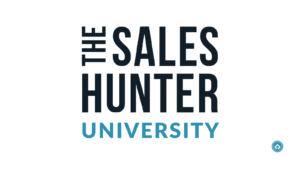 Last month’s masterclass covered Filling the Sales Pipeline, and the month before that we saw Following Up with the Prospect. Did you know if you become a member of The Sales Hunter University via Level 3 you get access to every masterclass, past, present, and future? That alone is worth the membership, but I also offer drop-in office hours, live coaching each month, and access to the University’s Sales Vault of resources. Find out more here.
Last month’s masterclass covered Filling the Sales Pipeline, and the month before that we saw Following Up with the Prospect. Did you know if you become a member of The Sales Hunter University via Level 3 you get access to every masterclass, past, present, and future? That alone is worth the membership, but I also offer drop-in office hours, live coaching each month, and access to the University’s Sales Vault of resources. Find out more here.
Copyright 2021, Mark Hunter “The Sales Hunter” Sales Motivation Blog. Mark Hunter is the author of A Mind for Sales and High-Profit Prospecting: Powerful Strategies to Find the Best Leads and Drive Breakthrough Sales Results.
FollowFollowFollowFollowFollowFollow
The post 10 Tips to Get More Referrals first appeared on The Sales Hunter.
October 27, 2021
The 9 Best Sources for Sales Leads
If you’re not happy with the quality of your leads, it’s time to check your sources.
You wouldn’t keep going back to the same apple stand if you always got rotten apples, would you? You’d probably go where you’ve bought excellent apples before, or where others have recommended.
Let’s take a moment and analyze nine excellent sources for leads that are much more likely to become qualified prospects, and later satisfied customers.
Only a few more days to enroll in the NEW Sales Prospecting: Filling the Pipeline Masterclass. Remember, if you sign up now, you’re invited to my exclusive webinar sharing my personal strategies to keeping my pipeline filled on Nov. 4th at 2:00 CT.
1. Tight ICP
I don’t want leads coming in that are just random people. Rather, I’ll ask myself, “Does the lead fit my tight ICP, (my ideal customer profile)?”
Knowing your ICP will save you time and money. When I see how my lead lines up with my ideal customer from the get-go, that helps me make better decisions about how to move forward.
If you don’t know your ICP, I recommend checking out my Ideal Customer Profile Masterclass here .
2. What’s worked before
Look at where your leads have come from before–which ones converted, and which did not? Take a look historically at what has worked for you.
What I find is, too many people just chase numbers. Don’t chase numbers, chase quality sources. You may have gotten 90% of your leads from this particular source over here, let’s say webinars, and only 5% have come from this very minute area.
But if those 5% of your leads have a much higher conversion rate, then you definitely want to focus on what’s been profitable. Perhaps you get the majority of your leads from a particular geographic area because it fits your ICP–great! Zero in on what’s worked before.

via Saturday Night Live on GIPHY3. Referrals
Oftentimes salespeople do not take advantage of referrals. I want you to drive that home with every customer that you have.
“Hey, who else might I be able to assist in the same way that I’ve been able to help you?” These are very easy conversations for you to have. Plus, when they give you a referral, it has a much higher likelihood of closing!
My insider tip is to keep the customer or person who gave you the referral engaged. Keep them involved, let them know what happens to the referral. If it closes, make sure you let them know, and the same if it doesn’t. Because there’s nothing worse than giving somebody a name, and maybe even making an introduction, and never hearing from them again.
4. Reputation
Your reputation impacts much more than you. People do not start working with another person until they first have done a little bit of a background check.
If you want to have a conversation with this ‘ideal customer,’ they’re going to go out and check your profile before they agree to a meeting. This is not an excuse for you to go hog wild on social media. It’s more about what the internet says about you and your company.
For example, I put out a Youtube video and blog like this every week. I’m continuously streaming content out there. Certainly, it’s part of my business, but what does it do? It improves my reputation. Of course, you have to do it in a controlled manner. But your digital footprint is definitely something worth examining and spending some time on.
5. Existing customers
This goes beyond referrals. There’s a tremendous amount of business that gets left on the table when we ‘close a deal.’
We don’t close a deal. We open a relationship.
If you are not able to get a significant amount of business from your existing customers, then something’s wrong with the product or the service you deliver. The amount of sales you get from repeat and additional business is a real indication of the quality of the service that you provide.

via The Tonight Show Starring Jimmy Fallon on GIPHY6. Associations
What are the associations that you need to be aligned with? If a particular ICP has a trade association, are you involved with that trade association? Are you engaged with them? This is an excellent lead source.
7. Your networkYou don’t use your network, you nurture your network. You’re helping it multiply and grow, as a rising tide lifts all boats.
I’ll bet you’ve got a network that knows you, values you, sees quality in you and you see quality in them. What can you be doing to help them get more leads, too?
Help others and watch how you pay it forward. There will be benefits for you, too.

via CBC on GIPHY8. Be an influencer
I coach a lot of salespeople, and one of the things that I’ve noticed is as they become more and more of a top performer, they are seen more and more as an influencer in their space.
Does being a top performer precede becoming an influencer, or does being an influencer precede being a top performer? I don’t know. I don’t care, but it’s amazing how the two go hand in hand.
Are you participating in association events? Are you participating in industry activities? What are you doing there to really help and be seen? For the content you’re putting out on LinkedIn, are you adding commentary that’s allowing people to see your expertise? Are you adding pieces of information? Are you helping others?That’s how you become an influencer.
9. Qualify everyone
Don’t allow a lead to make any progress until it’s qualified. You have to have a qualification process. When people come to me with a clogged pipeline, it is invariably clogged because they’ve allowed stuff to get in there that really has no reason to be in there.
Instead, qualify everyone early on and don’t allow people who don’t measure up to the criteria.
Read more about how to know if a lead qualifies as a prospect.
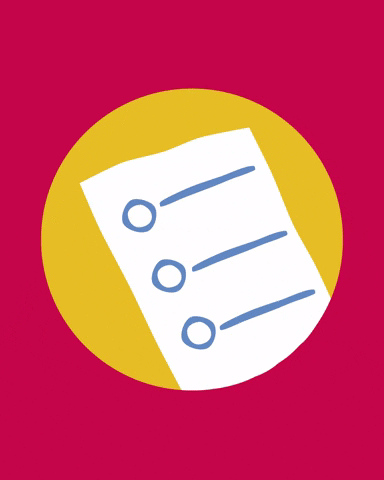
via UQ Sport on GIPHYHaving great leads can facilitate a healthy, efficient pipeline. However, you and I know that so much more goes into it than that.
That’s why I developed this month’s masterclass around Filling Your Sales Pipeline.
This course dives into every step from leads, to qualifying prospects, to follow-up and making your offer. I’ve even included helpful checklists for before you call a prospect, how to qualify a lead, and before you make your sales offer.
I know you’ll find the 14 videos engaging, and the 32-page workbook helpful and eye-opening. I designed it to help you identify weaknesses, and capitalize on your strengths. But we won’t leave it there–you’ll finish with clear steps to take your prospecting to the next level and revitalize that pipeline.
Don’t forget, if you enroll now, I’ll invite you to my exclusive webinar only for those that buy this course. Learn my inside secrets on how I keep a full pipeline on November 4th at 2:00 CT.
Level 3 Members of The Sales Hunter University already have access to this masterclass course, and EVERY masterclass I’ve ever taught! To learn more about this opportunity, click here.
A great new resource, available now! “The true secret to success in sales is caring. Caring for others, caring for results, caring for growth. Those who care the most, sell the most.”
Really Care For Them is for those who want to learn to do sales the right way with the most success as fast as possible. It helps readers escape adversarial, competitive, self-destructive sales behavior by developing a collaborative, trust-based approach to selling in a way that builds value and trust.
About the author: Mareo McCracken is the Chief Revenue Officer at Movemedical where he leads the sales, marketing, and customer success efforts. Prior to helping lead this Med Tech SaaS company, Mareo was the top performing salesperson at multiple companies in various industries including financial services, logistics, manufacturing, and commodities.
Buy now on Amazon here!
Copyright 2021, Mark Hunter “The Sales Hunter” Sales Motivation Blog. Mark Hunter is the author of A Mind for Sales and High-Profit Prospecting: Powerful Strategies to Find the Best Leads and Drive Breakthrough Sales Results.
FollowFollowFollowFollowFollowFollow
The post The 9 Best Sources for Sales Leads first appeared on The Sales Hunter.
October 20, 2021
10 Tips to Fill Your Prospecting Pipeline
Clogging your pipeline with bad leads that can’t or will never become customers costs you in lost time and lost money.
I believe there are some ways to ensure you’re putting the right customers into your pipeline, and moving them through swiftly and efficiently.
These tips show a snippet of this month’s masterclass: Sales Prospecting: Filling the Pipeline. Preview the full contents here and enroll now!
1. Short pipeline
Don’t have your pipeline be so long! In other words, too many steps can make the process tedious for the prospect. This really destroys a lot of salespeople, because when you have a long pipeline, you just don’t have the ability to be on top of things. Instead, keep it simple.
The simpler it is, the faster you can move stuff through, which allows you to fill it and keep it filled much more frequently.
2. Simplify the offerMaking it easier for your prospects makes it easier for you, too.
Don’t make what you sell so complicated. Make it easy for the customer to do business with you. This is one of the most uncomplicated ways to have a short pipeline.
When customers understand the solution you’re going to provide to the challenge(s) they have presented to you, you can move them through quite quickly.

via GIPHY3. Dedicated time
Your pipeline absolutely won’t fill itself. You have to put the time in.
If you’re not setting time on your calendar to say, “This is my time to be prospecting,” your pipeline’s never going to get full. Create dedicated time and honor that commitment.
4. Focused lead sources
Don’t accept leads from anywhere and everywhere. Instead, stay focused on targeted sources. For example, maybe all of my lead sources come from these two or three or four or five areas. But that’s it. You’ll be able to nurture and grow them at a much faster clip, which will give you more qualified leads. Those will turn into qualified prospects, and later, great customers.
Read more about how to know if a lead qualifies as a prospect.
5. No shiny objects
You might see a cool opportunity, and it’s a one in a million shot that you’re going to get it. That’s just a shiny object. Avoid that at all costs. The best performing salespeople are the ones who stay extremely focused. They know where their business comes from and they stay right there in that lane.

via GIPHY6. Clearer messages
Your customers need to understand what you do and how you can help them. You create clear messages through everything that you do–your online reputation, your company website. The customer should at no point feel confused by your communication. Don’t throw so many options and opportunities in front of them. Instead, make it straightforward.

via GIPHY7. No suspects
Don’t allow suspects to hang around in your pipeline.
Now, what’s a suspect? A suspect is somebody who looks like a prospect, but is not. This may be a company that fits your ICP, maybe even meets all the criteria, but they’re not going to make a decision for two years or three years. Get them out of your pipeline. Put them in your marketing funnel.
Don’t put them in your sales pipeline, because you can’t afford that. You don’t have room for suspects. You only want to have qualified people that you’re going to be able to do business with.
8. Referrals
Are you asking for referrals frequently enough? Referrals are absolutely outstanding, and the easiest way for you to fill your pipeline.
In fact, you can ask for a referral at any point if you’ve delivered value to your customer. Don’t think you can’t. If you’ve delivered value, you can ask them for a referral.
9. NetworkWho is in your network? Who are those people that you can be tapping into and accessing?
Now, you have to help them, too. This is a two-way street. Don’t just use your network, nurture your network.
I get a tremendous amount of business that comes from my network. These are people who I work with closely, I know, and they refer people to me, and it’s wonderful.
10. “No” customers
These are customers that have rejected you in the past. They may have said no to you last year, but you know what? Things have changed. Go back.

For some reason, they were a qualified prospect to you a year ago. They just chose to go somewhere else. Never think for a moment that you can’t go back to a customer who said no to you before.
And don’t sit there and say, “Well, we didn’t deliver. This was not a “no” customer. I just can’t go back to them because we didn’t do a good job.” How do you know that? You have no idea.
Was this helpful to you?Always use the customers you’ve developed a relationship with, whether they’ve become buying customers or are still standing on the sidelines.

This is only the tip of the iceberg. This month’s Masterclass, Sales Prospecting: Filling the Pipeline is incredibly thorough and covers step by step, every detail of your prospecting process.
I want to ensure that you’ve got a healthy pipeline. This course isn’t just a checkup, it’s an evidence-based treatment plan with doable steps and strategies. As a bonus, I’ve included some checklists for you as a salesperson, for your sales offers and for before you call.
By the end of this course, we’ll have covered each and every area of your sales. I’d bet that’s worth the $59 enrollment. Enroll now, and secure your seat at my ‘invitation only’ webinar on Nov. 4th at 2:00 PM central where I share my personal tips to keeping my own pipeline full.
Remember, you don’t have to stop there. The Sales Hunter University is designed to do one thing: to help you sell. That’s why I’ve created three levels of membership according to your needs. If you’re looking for more accountability, and a lot more knowledge, check out more here.
Copyright 2021, Mark Hunter “The Sales Hunter” Sales Motivation Blog. Mark Hunter is the author of A Mind for Sales and High-Profit Prospecting: Powerful Strategies to Find the Best Leads and Drive Breakthrough Sales Results.
FollowFollowFollowFollowFollowFollow
The post 10 Tips to Fill Your Prospecting Pipeline first appeared on The Sales Hunter.
October 13, 2021
10 Steps for Successful Prospecting
I believe that with a little self-evaluation, you can draw a lot of valuable conclusions. Successful prospecting demands growth and learning. Undoubtedly, prospecting requires a human touch, it cannot be done by robots. Since emotions are involved, introspection can be incredibly beneficial.
I’ve created this checklist of questions I ask myself, and I invite you to as well. Try going through them on a daily basis, and expect big changes in both yourself and in your work.
1. Were you a rain barrel or a rainmaker today?Did you spend your time just taking care of business that was falling in your lap, or existing business? That’s a rain barrel.
On the other hand, were you actively trying to create incremental opportunities? The status quo is easy, but I think you can be capable of so much more.
If you simply wait for the rain, you’re prone to experience drought. Rainmakers are not subject to the weather, because they make and cultivate their own good fortune.
Read more about how to be a rainmaker.

via Robert E Blackmon on GIPHY2. What did you learn today?
What did you learn today about your customers? Or your sales process? What did you learn today that helped you grow?
Life-long learners make great salespeople.
Want to learn about upping your game on LinkedIn? I have an amazing bonus Masterclass this month with hours of valuable content to make LinkedIn a valuable tool in your prospecting belt. Find out more about content and enrollment here .
3. How will what you learned today help you tomorrow ?
Every day I want to learn something new. What’s more, I want to be able to use it tomorrow. That allows me to continue to get better, and that’s huge.
4. What was your biggest success today?Sales is not a destination, sales is a journey. Prospecting is the same way–we’re continuously learning.
I always want to end the day on a high note. I want you to end the day in the right frame of mind, because it’s going to help you set up for the next day. You can be better tomorrow.
5. What was the best question you asked today?Because prospecting can be lonely. And if you celebrate your success, no matter how small it was, it changes your whole mood.
I love going back at the end of each day, remembering the customers I spoke to, and evaluating my best questions from those conversations. It helps me continue to improve the questions I’m asking.
Write it down. Save it for future conversations.

via YoungerTV on GIPHY6. What did you learn today that will make you a better salesperson?
This goes beyond what you learned about your customers. What did you learn regarding your time management? What did you learn about how you organize things?
Self evaluation is absolutely critical because it’s going to help make you a better salesperson, but only if you do something about those weaker areas.
7. Who did you move closer to a decision, and why do you believe that?This is powerful because it calls into question what you’re doing. Were you just making a bunch of random phone calls or emails, or were you systematically moving prospects through your pipeline?
And who did you move closer to and why do you believe that?
8. Who am I speaking with tomorrow?What do you expect to learn and accomplish from those conversations? Remember, tomorrow begins today. I always say you never end the day without knowing exactly what you’re going to do tomorrow.
From a prospecting standpoint, I want to lay out my prospecting checklist and my performance checklist. I want to know who I’m going to be talking to tomorrow and what my expected outcomes are.
 9. What percentage of your CFT today has been spent on existing clients versus prospects?
9. What percentage of your CFT today has been spent on existing clients versus prospects?
CFT stands for customer face time. This is really powerful, because I see a lot of people struggling to make their quota due to spending all of their CFT on existing customers. In fact, their existing customers aren’t big enough, or generating enough new business on a regular basis to help them make their number.
10. Did you achieve your daily goals?You’re not going to make your number unless you’re spending your CFT on prospects.
What were the daily goals, and did you achieve them? Look back at those goals that we wrote the night before. It’s good to remember each one, and evaluate your results. This step is also a good reminder to write down your goals for the next day.

via NAB on GIPHY
This checklist is just a sneak peek at some of the content in my new prospecting masterclass out NOW on The Sales Hunter University. “Sales Prospecting: Filling the Pipeline” will go in-depth on the routines, strategies, and steps to filling your pipeline with profitable prospects. Let me help you end the year strong, enroll now.
In fact, if you enroll now, I’ll send you an exclusive invitation to my webinar to share my inside secrets on how I keep a full pipeline on November 4th at 2 PM CDT.
This month also features a BONUS Masterclass for those looking to use LinkedIn to its fullest potential. I’ve teamed up with experts Brynne Tillman and Bill McCormick to give you over 4 hours of content!! Let’s be honest, your LinkedIn profile needs a makeover, and you could be using it for so much more! Enroll now.
Remember, The Sales Hunter University has more than just amazing Masterclasses. I’ve created three levels that each offer content tailored for people like you. Plus, if you choose Level 3, you get access to every Masterclass, both past and future. It’s an amazing deal. Check it out, here.
Copyright 2021, Mark Hunter “The Sales Hunter” Sales Motivation Blog. Mark Hunter is the author of A Mind for Sales and High-Profit Prospecting: Powerful Strategies to Find the Best Leads and Drive Breakthrough Sales Results.
FollowFollowFollowFollowFollowFollow
The post 10 Steps for Successful Prospecting first appeared on The Sales Hunter.
October 6, 2021
How to Know if a Lead Qualifies as a Prospect
Your time is valuable. Your skills are valuable, too. So before you get too cozy with any lead in your pipeline, it’s worthwhile to take a moment to evaluate. Is this a prospect I can move forward with, or just a suspect?
I have seven questions you might ask yourself about a lead before you invest any more time and effort. If your lead can’t pass this test, you’d be wise to reevaluate the relationship.
1. Does it match your ICP (ideal customer profile)?Need help generating more leads on social platforms like LinkedIn? Make time on October 13 at 3 p.m. EST to learn from the experts in a free webinar. Or, if you’re sure you need serious help maximizing the potential of LinkedIn, enroll in our Masterclass, available now.
I see so many salespeople who have leads, or what they think are prospects, and they’re excited. But their “prospects” don’t even come close to who they’re truly qualified to work with!
From experience with prior clients, you should know the kinds of outcomes you can create. However, if these “leads” are inconsistent with your portfolio of outcomes, why waste time? That bad lead isn’t going anywhere. You want to make sure that it matches your ICP, because otherwise you aren’t fulfilling your true purpose, which is to help them.
If you want to dive deeper into this topic, check out my Ideal Customer Profile Masterclass here.
2. Why do you think they could become a client?Once you’ve determined you have a good lead, now it’s time to make some observations. What have you heard? What have you seen?
Use these clues to filter leads through a process of elimination. And remember, keep that ICP in mind. My next step requires even more evidence…
3. What are you basing this belief on?
Is this just a random hunch, or actual facts that you’ve heard from them? Or, can you base your decision on facts you’ve been able to glean from their business, or from what’s going on in their industry?
In other words, if you can’t really understand how to help them, why are you wasting time on them?

via Tin Can Bros on GIPHY4. What is the need, the challenge, the opportunity, or the problem they’ve identified for you?
If they’re not willing to share the issues that they’re dealing with, do they really want you to help them? Perhaps they are just looking for you to give them information.
If they’re not willing to be forthcoming in terms of helping you understand their challenges or needs, then there is no need to be spending time with them.
5. What’s the process they use to make decisions?
Either they think about it a lot, but they never get around to doing it, or they actually have a process.
Well, how do you know this? In some cases, you’re not going to find out until you’re deep down in the funnel. Nevertheless, if you can’t begin to gain some interest, or gain some knowledge, that should be a red flag.
The last thing you want to do is spend time with someone you think is a great prospect, and then find out they’re in a long-term contract with some other company, and they can’t break that. Now you’ve wasted all this time.

via Paramount Network on GIPHY6. What are the next steps the prospect has agreed to?
First of all, have they agreed to any next steps? I see people who are really engaged and interested, but again, all they’re doing is looking for you to give them information. In other words, it’s audience participation time. They need to get involved, and indicate they’re ready for some next steps.
7. What do you see as a potential solution, and what are you basing it on?If they’re not willing to, then it’s time to start questioning–is this a highly qualified prospect, or is this just a lead to leave on the backburner?
Once you understand all this information about them through the questions I’ve laid out here, what do you see as the potential solution? It’s time to analyze the facts, and come up with a plan.
Is there another company you’ve helped solve a similar problem? What experiences are you bringing to the table? Your integrity relies on your ability to generate the results you propose, so honesty is key here.
Sales is all about helping customers see and achieve what they didn’t think is possible. Can you deliver that for them?

via GIPHYI want you to be focused on valuable prospects. Don’t clog your pipeline with leads that are going nowhere. Taking the time to evaluate your leads will save you time and money.
For more programs geared toward helping you be more successful, I recommend looking at what The Sales Hunter University has to offer. I create a Masterclass each month on topics I know will help salespeople achieve more.
This month is special, as I’m offering a bonus Masterclass focused on making and using opportunities on LinkedIn. Mastering LinkedIn for Business Development is LIVE now! I’ve teamed up with amazing experts, Brynne Tillman and Bill McCormick. You really don’t want to miss this.
Plus, save October 13th at 3PM EST on your calendar. Brynne, Bill and I are offering a webinar about Creating Authentic Social Selling Conversations. Spots are limited. Sign up now.
Copyright 2021, Mark Hunter “The Sales Hunter” Sales Motivation Blog. Mark Hunter is the author of A Mind for Sales and High-Profit Prospecting: Powerful Strategies to Find the Best Leads and Drive Breakthrough Sales Results.
FollowFollowFollowFollowFollowFollow
The post How to Know if a Lead Qualifies as a Prospect first appeared on The Sales Hunter.
Mark Hunter's Blog
- Mark Hunter's profile
- 25 followers


